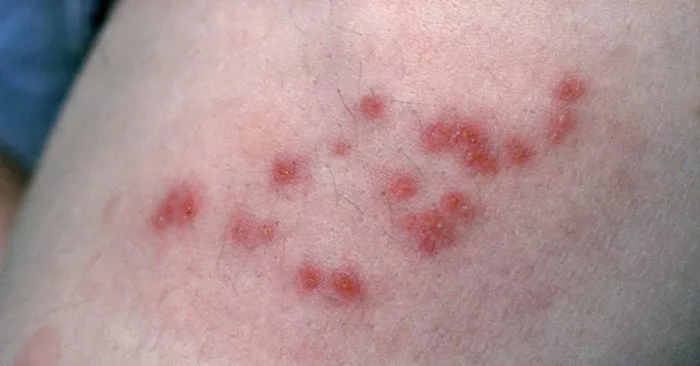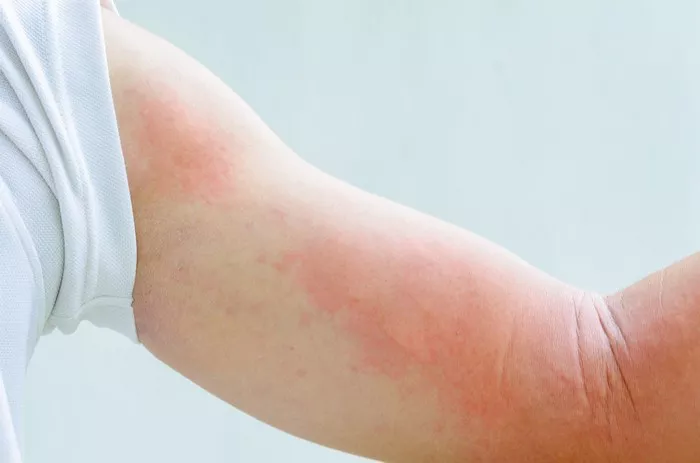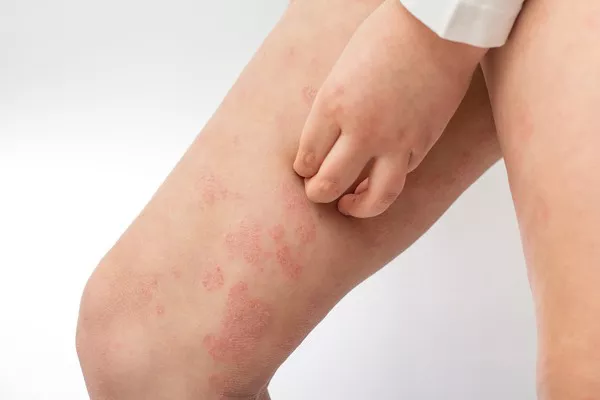Viral infections can manifest in various ways, often leading to confusion due to similarities in symptoms. Among these, shingles and cold sores are frequently mistaken for one another. Despite both being caused by viruses within the Herpesviridae family, their causes, symptoms, affected areas, and treatments differ significantly. This article aims to clarify these differences, providing a comprehensive understanding of shingles and cold sores.
Introduction to Shingles and Cold Sores
Shingles: A Recurrence of Chickenpox Virus
Shingles, also known as herpes zoster, is a reactivation of the varicella-zoster virus (VZV) – the same virus responsible for chickenpox. After an individual recovers from chickenpox, the virus remains dormant in the nerve tissue near the spinal cord and brain. In some cases, it reactivates years later, causing shingles. This reactivation typically presents as a painful rash on one side of the body, often in a stripe of blisters.
Cold Sores: A Common Herpes Simplex Virus Infection
Cold sores, also known as fever blisters, are caused by the herpes simplex virus type 1 (HSV-1). This virus primarily affects the oral region, leading to painful sores around the mouth and lips. Unlike shingles, cold sores are not a reactivation of a childhood illness but can recur throughout an individual’s life, often triggered by factors such as stress, illness, or sunlight exposure.
Causes and Transmission
Shingles: Dormant Virus Reactivation
The varicella-zoster virus remains inactive in nerve tissues after an individual recovers from chickenpox. Shingles occur when this virus reactivates. The exact reason for reactivation is not fully understood, but it is believed to be linked to a weakened immune system. Factors such as aging, immunosuppressive medications, and stress can contribute to the reactivation of VZV.
Transmission of Shingles
Shingles itself is not contagious. However, the VZV can spread from a person with active shingles to someone who has never had chickenpox or received the chickenpox vaccine, causing them to develop chickenpox. This transmission occurs through direct contact with the fluid from the shingles blisters. Once the blisters crust over, the person is no longer contagious.
Cold Sores: Herpes Simplex Virus Activation
Cold sores are caused by the HSV-1, which is highly contagious. The initial infection usually occurs in childhood and can be spread through close personal contact, such as kissing or sharing utensils. Once infected, the virus remains in the body, residing in nerve cells. Cold sores can recur due to triggers such as fever, sun exposure, hormonal changes, and stress.
Transmission of Cold Sores
HSV-1 spreads primarily through direct contact with an infected person’s saliva or skin. The virus can be transmitted even when sores are not present, though it is more contagious during an outbreak when blisters are visible. Preventive measures include avoiding direct contact with the sores, not sharing personal items like lip balm or utensils, and practicing good hygiene.
Symptoms and Affected Areas
Shingles: Symptoms and Localization
The hallmark of shingles is a painful, blistering rash that typically appears on one side of the body, often wrapping around the torso. Early symptoms may include pain, burning, numbness, or tingling in the affected area, followed by redness and the formation of fluid-filled blisters. Other symptoms can include fever, headache, sensitivity to light, and fatigue.
Localization
The rash usually occurs in a single stripe that wraps around either the left or right side of the body. It can also appear on one side of the face, potentially affecting the eye and leading to vision complications if untreated. The distribution follows the path of individual nerves (dermatomes), as the virus reactivates in a specific nerve root.
Cold Sores: Symptoms and Localization
Cold sores typically begin with a tingling, itching, or burning sensation around the lips or mouth. Within a day or two, small, fluid-filled blisters appear, which then burst, ooze, and form a crust before healing. This process usually lasts about two to four weeks.
Localization
Cold sores predominantly affect the area around the mouth and lips, though they can occasionally appear on the nose, cheeks, or inside the mouth. Unlike shingles, cold sores do not follow a nerve distribution pattern and can recur in the same or different locations during subsequent outbreaks.
Complications and Risk Factors
Shingles: Potential Complications
Shingles can lead to several complications, especially if left untreated or if the individual has a weakened immune system. The most common complication is postherpetic neuralgia (PHN), where the pain from shingles persists long after the rash has healed. Other complications include vision loss (if shingles affects the eye), neurological problems (such as encephalitis or facial paralysis), and skin infections.
SEE ALSO: How Long Does the Burning Pain Last with Shingles
Risk Factors
Risk factors for developing shingles include:
- Age: Individuals over 50 are at higher risk.
- Weakened Immune System: Conditions such as HIV/AIDS, cancer, or medications that suppress the immune system increase the risk.
- History of Chickenpox: Anyone who has had chickenpox can develop shingles.
Cold Sores: Potential Complications
Cold sores are generally less severe than shingles, but they can still lead to complications, particularly in individuals with weakened immune systems. Possible complications include severe infections in the eyes, leading to vision loss, and widespread herpes infection in people with atopic dermatitis (eczema herpeticum).
Risk Factors
Risk factors for cold sores include:
- Exposure to HSV-1: Close contact with someone who has an active infection.
- Weakened Immune System: Individuals with compromised immune systems are more susceptible.
- Triggers: Stress, fatigue, sun exposure, and hormonal changes can reactivate the virus.
Diagnosis and Treatment
Shingles: Diagnosis and Management
Diagnosis
Shingles is typically diagnosed based on the characteristic appearance of the rash and associated pain. A healthcare provider may also take a sample from the blister fluid for laboratory testing to confirm the presence of VZV.
Treatment
The main goals of shingles treatment are to reduce the severity and duration of symptoms, prevent complications, and manage pain. Antiviral medications (such as acyclovir, valacyclovir, or famciclovir) are most effective when started within 72 hours of the rash’s appearance. Pain management may include over-the-counter pain relievers, prescription pain medications, and topical agents.
Preventive measures include the shingles vaccine, recommended for adults over 50, which can reduce the risk of developing shingles and its complications.
Cold Sores: Diagnosis and Management
Diagnosis
Cold sores are usually diagnosed based on their appearance and location. A healthcare provider may also perform a swab test from the sore to identify HSV-1 or conduct blood tests to detect antibodies.
Treatment
Cold sore treatment aims to alleviate symptoms and speed up the healing process. Antiviral creams (such as acyclovir or penciclovir) can be applied directly to the sores to reduce their severity and duration. Oral antiviral medications (such as valacyclovir or famciclovir) may be prescribed for more severe cases or frequent outbreaks. Over-the-counter treatments, including pain relievers and topical creams, can help manage discomfort.
Preventive strategies involve avoiding known triggers, using lip balm with sunscreen to protect against UV light, and maintaining good overall health to keep the immune system strong.
Prevention and Lifestyle Management
Shingles: Preventive Strategies
The most effective way to prevent shingles is through vaccination. The shingles vaccine, Shingrix, is recommended for adults over 50 and those with weakened immune systems. It significantly reduces the risk of developing shingles and its associated complications.
In addition to vaccination, maintaining a healthy lifestyle to support the immune system can help reduce the risk of shingles reactivation. This includes a balanced diet, regular exercise, adequate sleep, and stress management.
Cold Sores: Preventive Strategies
Preventing cold sores involves avoiding contact with HSV-1 and managing triggers. Practical steps include:
- Avoiding Direct Contact: Do not kiss or share personal items with someone who has an active outbreak.
- Sun Protection: Use lip balm with SPF to protect against UV light, which can trigger cold sores.
- Stress Management: Engage in activities that reduce stress, such as yoga, meditation, and regular exercise.
- Healthy Lifestyle: Maintain a strong immune system through a balanced diet, regular exercise, and sufficient sleep.
Psychological and Social Impacts
Shingles: Psychological and Social Considerations
The pain and discomfort associated with shingles can significantly impact an individual’s quality of life. Chronic pain from PHN can lead to anxiety, depression, and sleep disturbances. Socially, the visibility of the rash can cause embarrassment and self-consciousness, particularly if it affects the face.
Cold Sores: Psychological and Social Considerations
Cold sores can also impact psychological and social well-being. The recurring nature of cold sores and their visibility around the mouth can lead to embarrassment, reduced self-esteem, and social anxiety. Managing the social stigma associated with visible outbreaks is a critical aspect of dealing with cold sores.
Conclusion
Shingles and cold sores, while both caused by herpes viruses, have distinct causes, symptoms, affected areas, and treatments. Understanding these differences is crucial for effective management and prevention. Shingles result from the reactivation of the varicella-zoster virus and primarily affect older adults or those with weakened immune systems, presenting as a painful, localized rash. Cold sores, caused by HSV-1, typically manifest as recurring blisters around the mouth and can be triggered by various factors throughout life.
Preventive measures, including vaccines for shingles and lifestyle modifications for cold sores, play a vital role in reducing the incidence and impact of these conditions. Both conditions can have significant psychological and social implications, highlighting the importance of comprehensive care that addresses both physical and emotional health. By recognizing and differentiating between shingles and cold sores, individuals and healthcare providers can better navigate these common viral infections, improving outcomes and quality of life.
Related Topics:


























